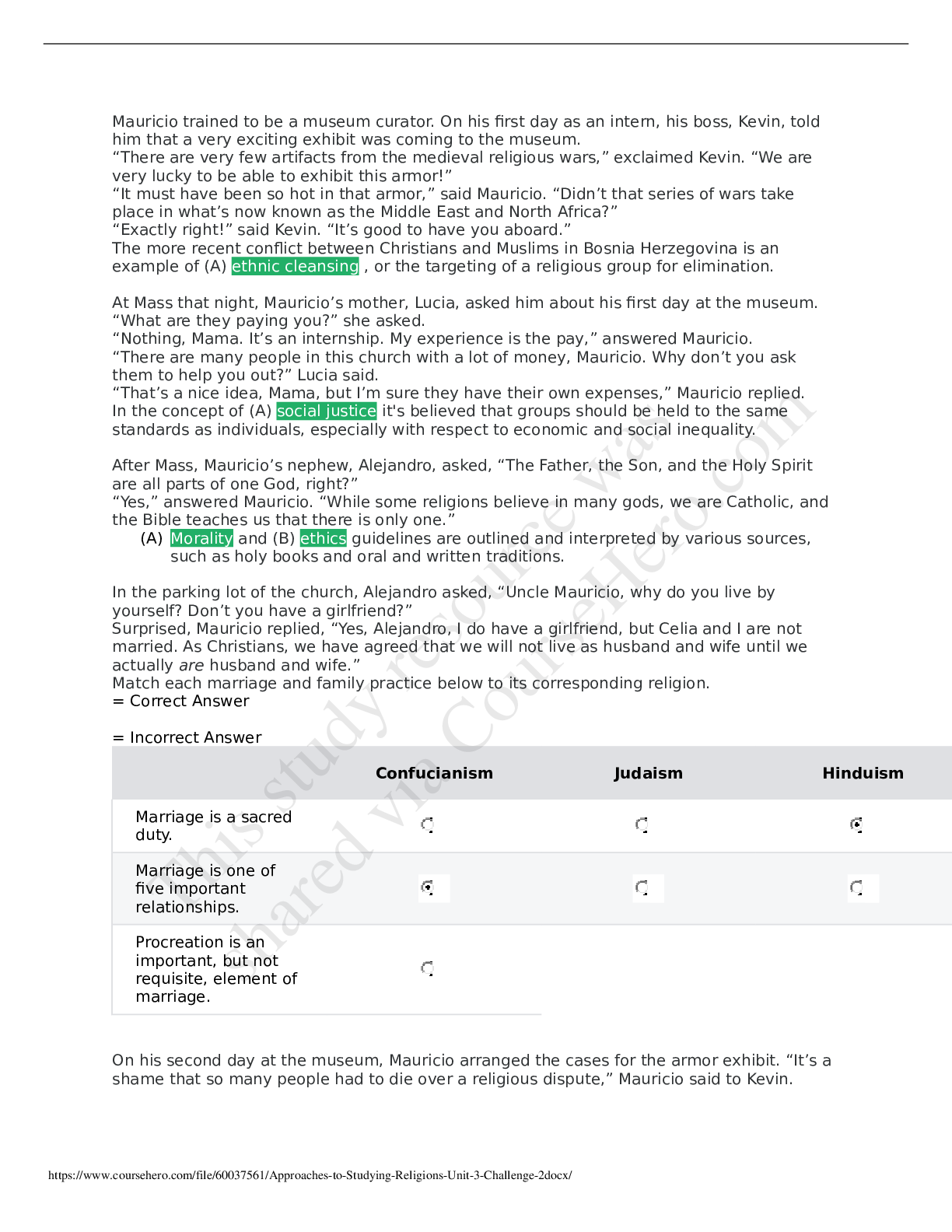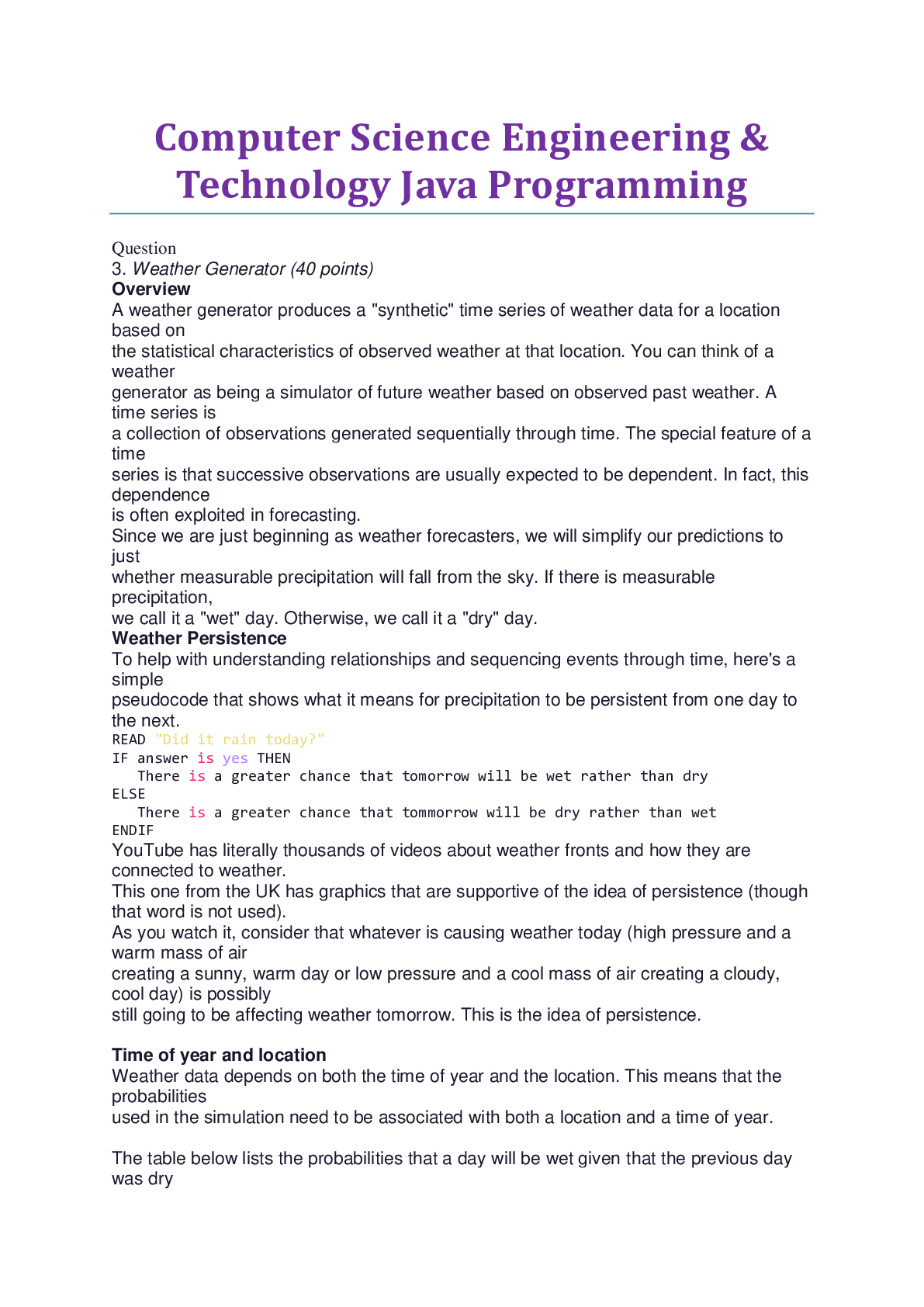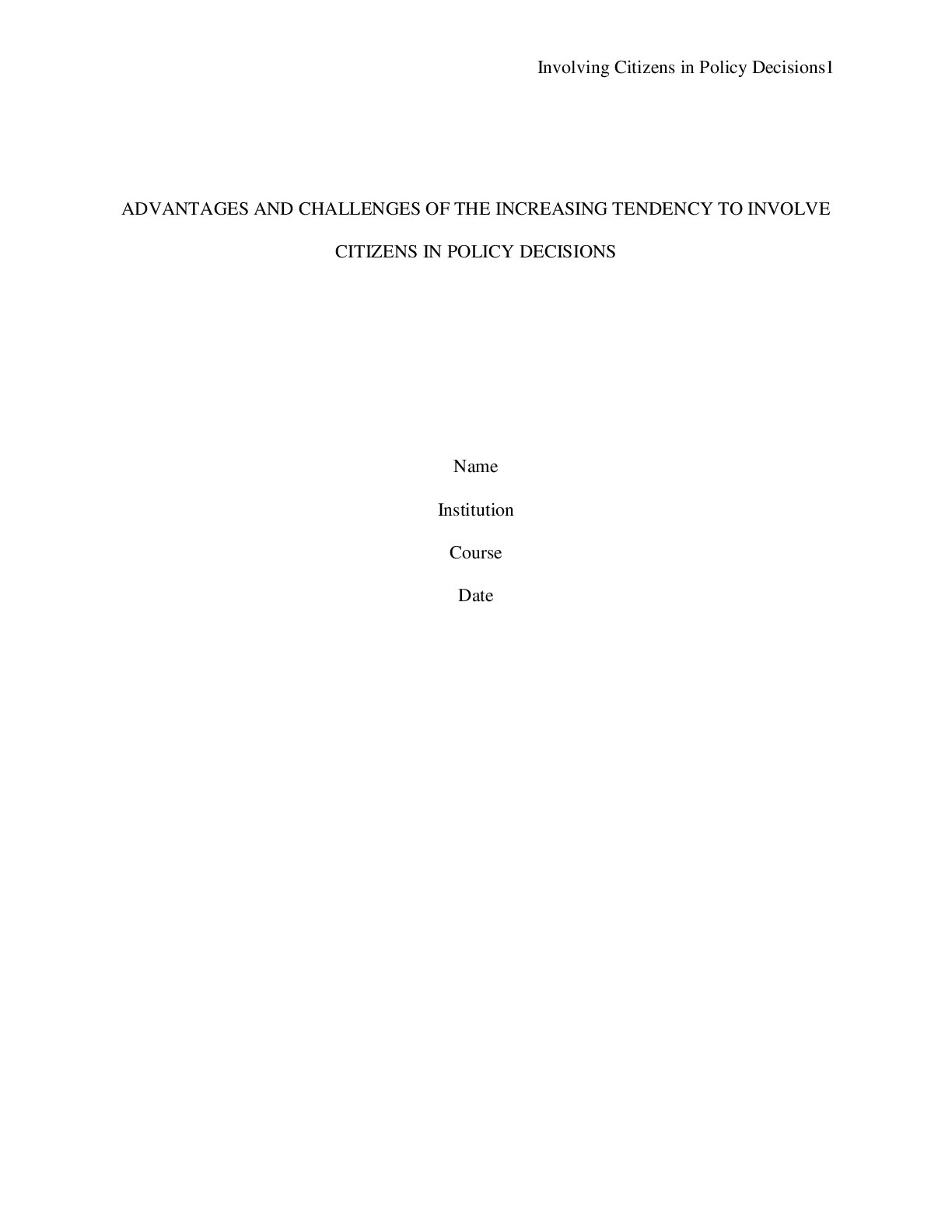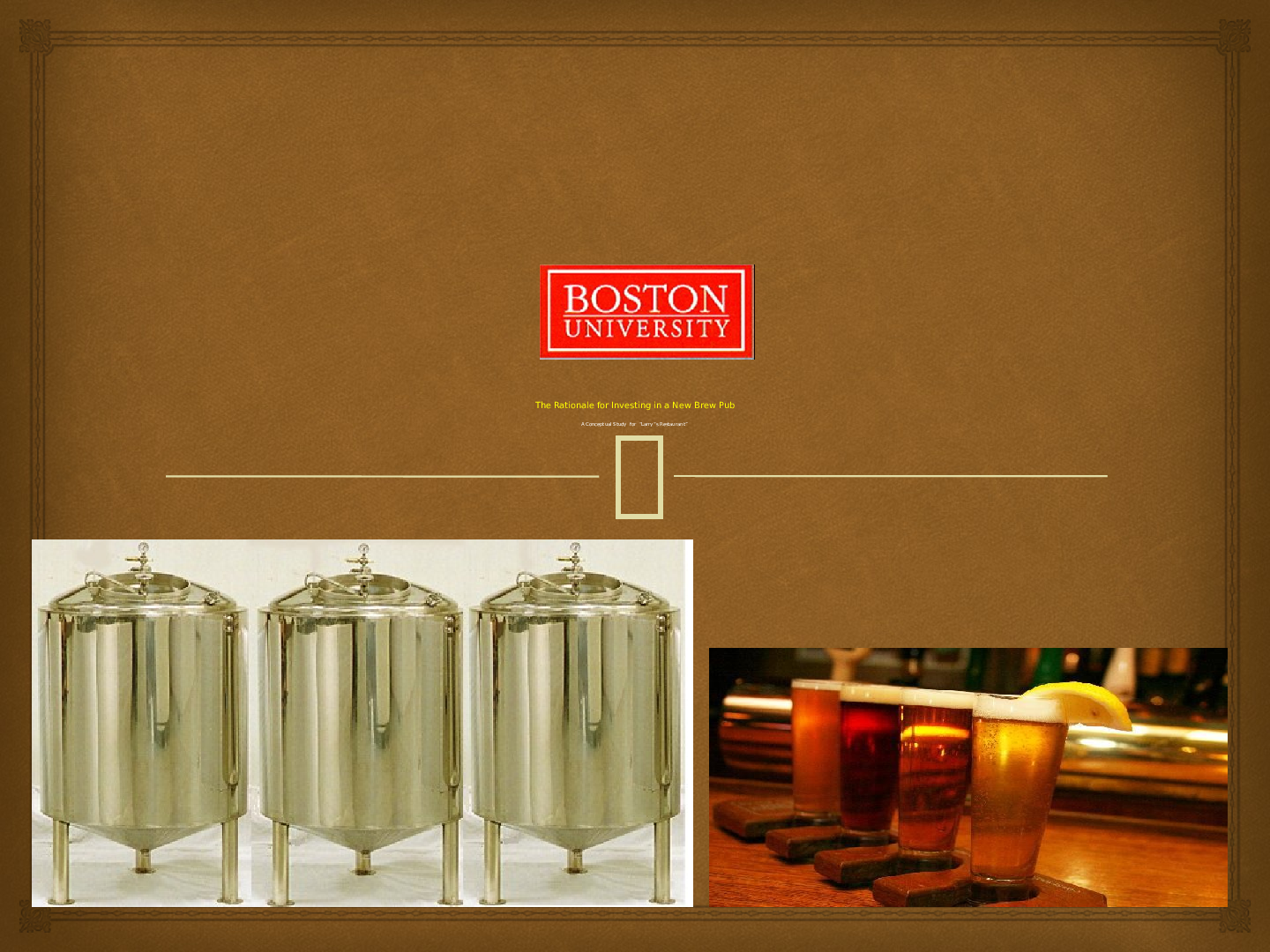Thermodynamics > Research Paper > Research Paper > MECH 341Tutorial 7 Refrigeration Cycles/ Thermodynamics 2 Tutorial 7: Refrigeration (All)
Research Paper > MECH 341Tutorial 7 Refrigeration Cycles/ Thermodynamics 2 Tutorial 7: Refrigeration Cycles First question will be discussed on Oct. 29, 2018; other questions are for further practice
Document Content and Description Below
Consider a two-stage cascade refrigeration cycle with a flash chamber as shown in the figure with refrigerant-134a as the working fluid. The evaporator temperature is -10°C and the condenser pressu... re is 1600 kPa. The refrigerant leaves the condenser as a saturated liquid and is throttled to a flash chamber operating at 0.50 MPa. Part of the refrigerant evaporates during this flashing process, and this saturated vapour is mixed with the refrigerant leaving the low-pressure compressor. The mixture is then compressed to the condenser pressure by the high-pressure compressor. The liquid in the flash chamber is throttled to the evaporator pressure and cools the refrigerated space as it vaporizes in the evaporator. The mass flow rate of the refrigerant through the low-pressure compressor is 0.11 kg/s. Assuming the refrigerant leaves the evaporator as a saturated vapour and the isentropic efficiency is 86% for both compressors, first sketch the cycle on a T-s diagram, then determine a) the mass flow rate of the refrigerant through the highpressure compressor, in kg/s, b) the rate of refrigeration (?ሶ) supplied by the system, in kW, and c) the COP of this refrigerator. Bonus question: determine the rate of refrigeration and the COP if this refrigerator operated on a single-stage vapourcompression cycle between the same evaporating temperature and condenser pressure with the same compressor efficiency and the same flow rate as calculated in part (a). Refrigerators and Heat Pumps: Go over the example problems in the text, including the basic vapour‐ compression refrigeration cycle (C&B ex. 11‐1 and 11‐2; the latter example problem also deals with non‐ideal effects, i.e., isentropic efficiency which you should review), 2‐stage cycle (C&B ex. 11‐4), and 2‐stage system with a flash chamber (C&B ex. 11‐5) 3. (C&B 11‐53). A two‐stage compression refrigeration system with an adiabatic liquid‐vapour separation unit as shown below uses refrigerant‐134a as the working fluid. The system operates the evaporator at ‐40ºC, the condenser at 800 kPa, and the separator at ‐10.1ºC. This system is to serve a 30‐kW cooling load. Determine the mass flow rate through each of the two compressors, the power used by the compressors, and the system’s COP. The refrigerant is saturated liquid at the inlet of each expansion valve and saturated vapour at the inlet of each compressor, and the compressors are isentropic. [Show More]
Last updated: 2 years ago
Preview 1 out of 6 pages

Buy this document to get the full access instantly
Instant Download Access after purchase
Buy NowInstant download
We Accept:

Reviews( 0 )
$9.00
Can't find what you want? Try our AI powered Search
Document information
Connected school, study & course
About the document
Uploaded On
Nov 11, 2020
Number of pages
6
Written in
Additional information
This document has been written for:
Uploaded
Nov 11, 2020
Downloads
0
Views
133












.png)

